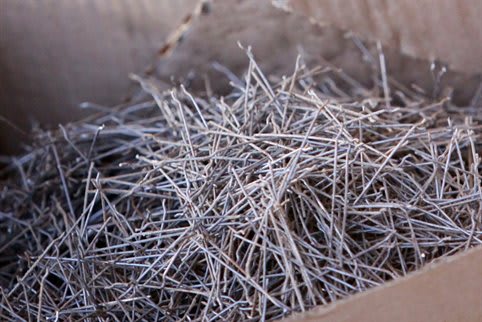
Steel wires, ready to be made into steel fiber-reinforced concrete. These ones have small deformations (“hooks”) at both ends to anchor them in the concrete (Image courtesy of CoGripedia.)
Structural engineering software company SCIA recently released SCIA Engineer 2018, the latest version of its signature structural analysis and design software. The new software includes several updates, but the most notable is the new tool for evaluating steel fiber-reinforced concrete (SRFC).Reinforcing concrete with tiny steel wires—in addition to rebar—has been popular in Europe, where it’s commonly used to reinforce industrial floors. SRFC is only now gaining traction in the U.S.
Steel Fiber-Reinforced Concrete Basics
On its own, concrete is weak in tension. So, concrete is reinforced by adding material that is strong in tension. The material of choice is rebar, tendons of steel embedded in concrete shapes. But steel fiber-reinforced concrete (SFRC) is increasingly gaining traction in the world of construction.
Fiber-reinforced concrete is a type of concrete that includes smaller, free-floating fibers that will, if oriented properly, take up the tension. The fibers can be made of steel, polymers, glass or carbon. Carbon or stainless steel are currently the most popular choices for the fibers used in this type of concrete because of their availability, mechanical properties and durability.Generally, the fibers are between 45 to 60mm (1.8 to 2.4 inches), or…

